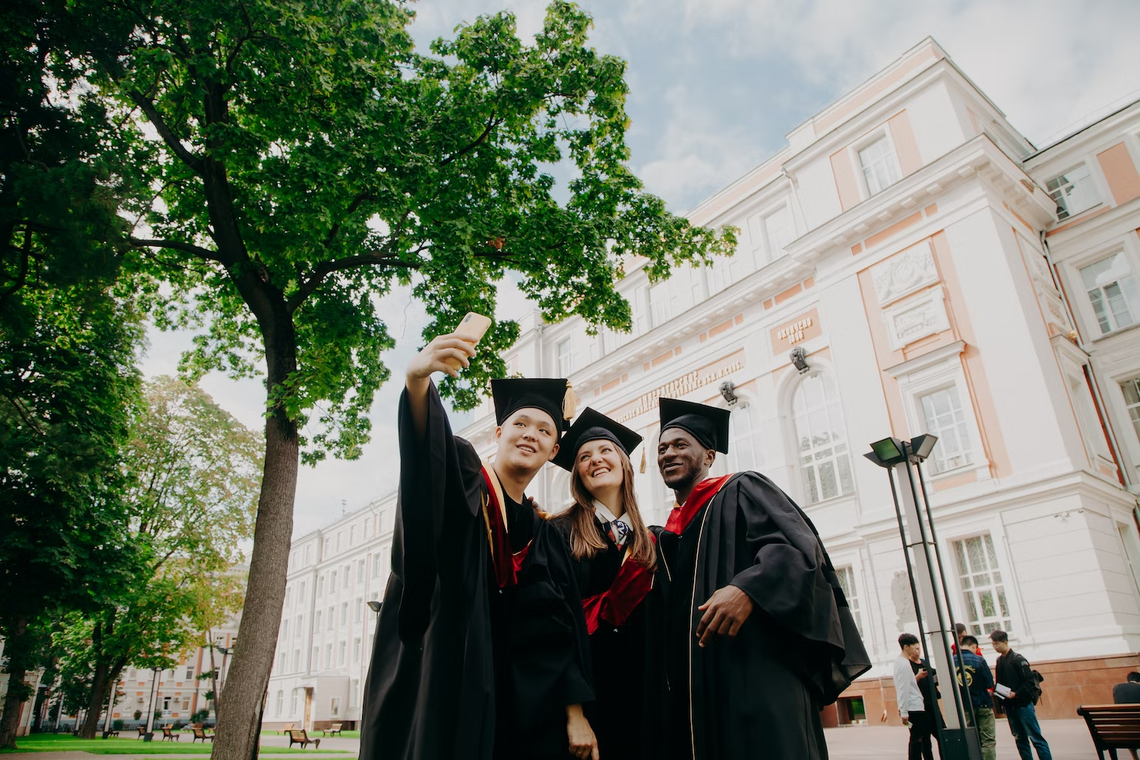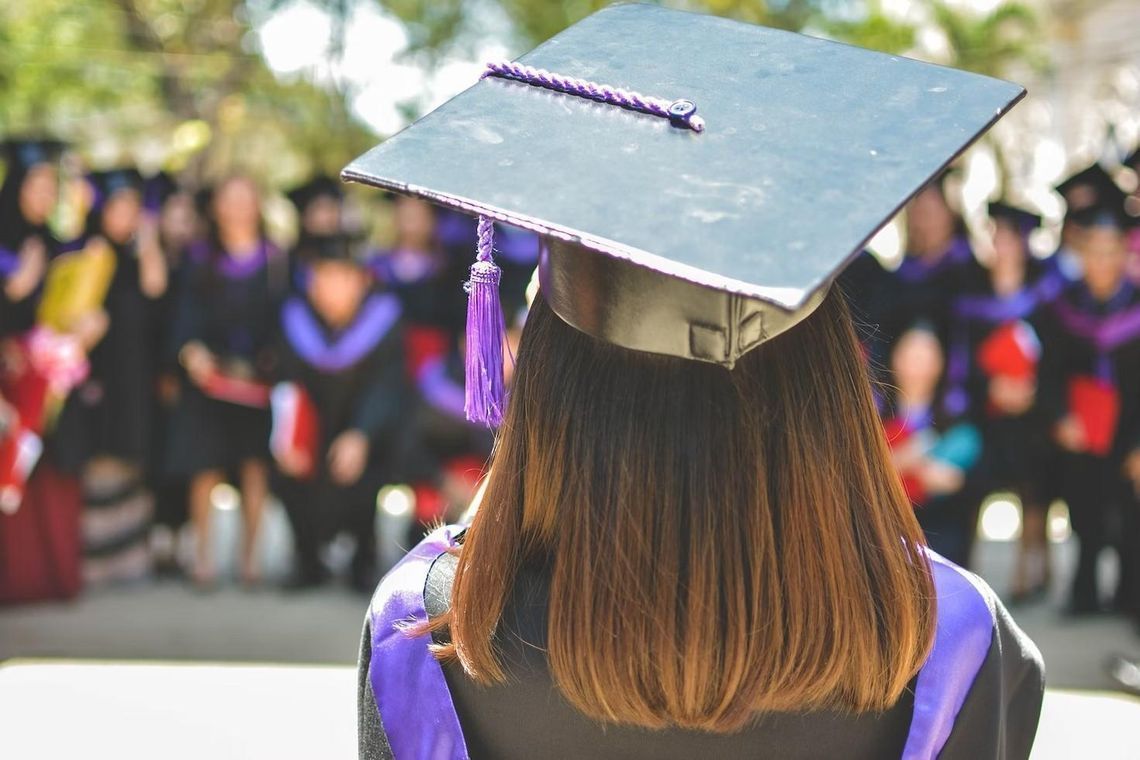
Apply to a foreign university with confidence
- Properly fulfilled documents
- Perfect motivation letter
- Support from a personal mentor
- Offers from several universities
Article score: 4.17 out of 5 (6 reviews)
How to get free education in the USA? Scholarships, assistantships and grants in the USA, requirements and deadlines for submission of documents.
Free consultation








There is no free higher education in the USA. For four years of study at a not very prestigious university, you will have to spend about 185,000 USD, including accommodation and meals. But this does not mean that American universities are closed for a person from a country with a lower average income. Costs can be reduced by winning a scholarship. They can be provided by:
The average coverage for most scholarships is 25-50% of tuition fees. But some cover all expenses: tuition, accommodation, and meals. It will be more difficult for undergraduates to receive funding — there are many more applicants, making the competition higher.
Scholarships in America are not given for nothing. With their help, the state and universities attract the most talented students from all over the world. Once they graduate, they will develop the American economy. Or spread American culture and values in their home country, improving the attitude of people towards the United States. Therefore, to receive a scholarship, the candidate needs to show the committee that the investment will not be in vain.
| Language exam | 260 USD |
| Application fee | 50-100 USD |
| Evaluation of the certificate / diploma | 160 USD |
| Being added to the foreign students’ base (SEVIS I-901 fee) | 200 USD |
| F-1 student visa | 360 USD |
| Flight | 380 USD |
| Study materials | 800-1,200 USD |
| Accommodation and meals | 6,000-14,000 USD/year |
| Medical insurance | 1,000-1,500 USD/year |
| Public transport | 900-1,300 USD/year |
There are two types of scholarships from universities. The first is merit-based scholarships. They are given to applicants for excellent academic performance and other academic achievements. To apply for a merit-based scholarship, the student will need:
The amount of the scholarship depends on the institution. At the University of Iowa, for example, students are paid up to 10,000 USD, which is 40% of the tuition fee. And at Emory University, the merit-based scholarship covers the entire tuition. Still, the most common amount is up to 30% of tuition fees.
Generally, the higher a university is in the rankings, the more generous scholarships it offers. But getting these generous scholarships is much more difficult.
In the United States, there are only two universities that give one hundred percent discount on tuition to all applicants who enter — Berea College and Curtis Institute of Music. The enrollment rates at these universities are very low: 30% at Berea and only 4% at Curtis. Curtis, by the way, is one of the best music schools in the country.
Information on the conditions for obtaining scholarships can be found on the websites of universities.
| University | Percentage of recipients[1] | Average scholarship size[1] |
| Duke University | 1% | 76,181 USD |
| Trinity College | 2% | 58,374 USD |
| Washington and Lee University | 13% | 54,293 USD |
| Swarthmore University | 2% | 54,256 USD |
| Webb Institute | 100% | 49,750 USD |
| Wesleyan University | 0.66% | 43,624 USD |
| Hollins University | 100% | 40,131 USD |
| Whitworth University | 99% | 38,684 USD |
| Beloit College | 97% | 36,511 USD |
| Hendrix College | 100% | 34,937 USD |
The second type of scholarships — need-based scholarships — is financial assistance to the financially challenged. Most good universities provide full assistance to all students who cannot afford to pay tuition fees. The amount of assistance needed is calculated using a simple formula: "tuition costs minus the possible contribution of the family".
A family's contribution is assessed based on many parameters, including the number of children and how many of them are currently pursuing higher education. Family income, in turn, must be below a certain amount. For example, at Harvard, it is 65,000 USD per year.
To collect the necessary information, many universities use common forms: CSS profile and IDOC packet. You can read more about the required documents on the respective sites.
The application for the scholarship is submitted along with the application for admission to the university. For those in need of financial assistance, it will be more difficult to pass the competition. If two students are equal in terms of academiс performance, most universities will choose the one who can fully pay for their tuition. This is the case, for example, at Williams College. To increase chances, you need to submit as early as possible — in the first days of accepting applications, and even better — during early admission. At these stages, the funding budget is being allocated. The chances of getting the scholarship later are close to zero.
Often, financial aid from a university includes not only a scholarship but also a paid campus job and an education loan. This is how the full coverage of the applicant's expenses is achieved at Wesleyan University. However, not all universities provide full financial assistance. Most give only a discount on tuition or partial cost coverage.
A separate category is need-blind universities. In the competition, they take into account only the portfolio of the future student and do not take into account their financial situation. Therefore, the chances of admission for rich and poor students are equal. Need-blind universities cover up to 100% of the costs: tuition, accommodation, meals and teaching materials. For international students, the list of need-blind colleges includes the 5 best universities in the United States. However, it is very difficult to get admitted there.
| University | Enrollment rate |
|---|---|
| Harvard University | 5% |
| Princeton University | 6% |
| MIT | 7% |
| Amherst College | 11% |
Below are the universities with full need-based scholarships. This means that they cover all expenses, including room and board. But to get financial assistance, you need to win the competition. These universities are not need-blind for international students. They give preference to wealthier applicants, all other things being equal. Therefore, for international students in need of assistance, the competition will be even higher. Some universities provide only 25-30 scholarships per thousand foreigners[2].
| University | Enrollment rate[3] |
| Columbia University | 5% |
| California Institute of Technology | 6% |
| Duke University | 8% |
| Williams College | 13% |
| Wesleyan University | 16% |
| Davidson College | 18% |
| Colgate University | 23% |
| Vassar College | 24% |
| University of Richmond | 28% |
| Skidmore University | 30% |
Another way to reduce the cost of education in the United States is to get an assistant position at a university. It implies working on campus up to 20 hours a week. In exchange, the university may reduce tuition fees by up to 100% and grant a scholarship to cover personal expenses.
Assistantship can be of two types:
Only graduate and PhD students can work as assistants.
To receive financial assistance, you need to win a competition. The requirements depend on the university, but in general, you will need:
Assistantship with a 100% discount and an additional scholarship can be obtained, for example, at Georgia State University and the University of Michigan. There are similar offers at the University of South Florida, University of San Francisco, University of Illinois, Texas A&M University, and many others. Information about Assistantship should be checked on the university websites.
Another state scholarship program is the Global UGRAD. It is designed for students of 1-2 courses of Bachelor's degree programs. The program fully pays for a semester of studying in America through an exchange program. It covers transfer, exams, visa fees, room and board costs, etc. One of the conditions is that during their exchange studies, program participants must take at least one course in American culture, politics or history. The university is chosen by the program staff, applicants can’t choose the institution on their own. The goal of the program is to expand American international influence by affecting the worldview of the young educated persons from other countries, with an accent on those with underrepresented, non-elite backgrounds, who haven’t had other opportunities to study in the USA .
There are several requirements for participation in the program. An applicant must be:
The exact conditions vary by country, so it is required to check them on the official website first. The application is done online and generally includes:
In 2021, the applications are open from January 5 to February 28.
Interviews in English are held in mid-March. They take about 20 minutes. Participants who pass the initial selection receive a letter with additional information. In August or January, successful fellows are to transfer to the United States. They have to return to their country of origin directly after the conclusion of the program. Dates and other nuances may vary depending on the participant’s country, and therefore it is advised to check the exact process on the website.
Scholarships in the US are also funded by private sources such as companies and non-governmental organizations. Such scholarships are often targeted at specific specialties or groups of people who cannot receive an education due to economic inequality.
AAUW runs an International Fellowship Program for women from around the world. The payment is 18,000 USD for undergraduates, 20,000 USD for PhD and 30,000 USD for Postdoc students.
The scholarship cuts education costs and allows women to do research at an American university so that they can become leaders in their home countries in the future. The program is open to all specialties.
Applying for the scholarship is possible after applying to an American university. Requirements for participation in the competition:
Read more about the required documents, stages of the competition and selection criteria on the website of the program.
Open Society Foundations offers various grants, scholarships, and fellowships. Their purpose is to stimulate socially significant research. The scholarship is available for PhD students. Participants can study both at home and abroad, but they need to be a citizen of an eligible country. The list of eligible countries can be found here.
The duration and amount of scholarship depends on the particular program. Students of any social and humanitarian direction can apply, but preference is given to research from the following areas:
Read more about the required documents, stages of the competition and selection criteria on the website of the program.
Institute for Human Studies offers an HSF Fellowship for PhD students pursuing studies in contemporary liberalism. The payout amount is up to 15,000 USD.
Candidates can apply from any country, but those who study in the USA, Canada or the UK have priority. Research in economics, political science, philosophy, law, history, sociology, and other related sciences is supported.
Required documents:
There are also scholarships for athletes. Among them, there are full-tuition ones, but most are partial, amounting to 500-8,000 USD. They are paid by the universities themselves or by third parties. The most famous is the National Collegiate Athletic Association.
Student sports in America are very developed. The competitions are broadcast on TV, and the stadiums are full of spectators. Many universities make money from their sports teams. Therefore, universities are trying to attract talented athletes from all over the world with the help of scholarships.
Most scholarships are only available to athletes from the NCAA Division I and II. To receive funding, a sports resume and professional sports video footage must be submitted to the university admissions committee. The resume must include all achievements: at least 2-3 years of playing sports, participating in competitions, playing in local sports teams. Special attention should be paid to filming. It is important to show the strongest sides of the athlete.
The most popular sports at universities are soccer, basketball, hockey, golf, football, tennis and athletics. But there are others. At Stanford, for example, there are 36 sports teams, including lacrosse and synchronized swimming. And Harrisburg University gives scholarships even to e-sports players.
Other universities with full scholarships and strong teams:
In general, sports scholarships are quite rare — only 1-2% of applicants receive them. In addition, academic achievements play an important role. The athlete will still need to pass the university’s score requirements, pass the TOEFL and SAT. Moreover, in some universities, the admissions committee looks first at academic performance, and only then at sports achievements.
In recent years, the most prestigious universities have begun to cut back on their sports programs. This is due to scandals surrounding the schemes of agents and coaches of sports teams. For a bribe, they enrolled ordinary students in universities under the guise of athletes, fabricated videos from performances and SAT results. So it became even more difficult to get a sports scholarship[4].
There is no single portal that collects all the relevant information about scholarships in the United States. You can use sites like internationalscholarships.com or educationUSA, but most of the options listed there are small scholarships with coverage of 500-1,000 USD. In addition, the information is often inaccurate or outdated, so it must be double-checked on the official websites of the programs. The most correct strategy would be to search for scholarships on the websites of chosen universities. You can also check what scholarships your government is offering for studies abroad.
60+ countries
we work with
$1,000,000 saved
by students through scholarships
6,400 offers
our students got